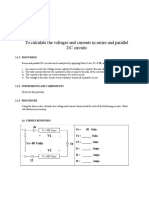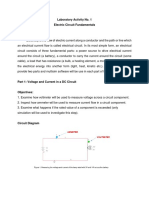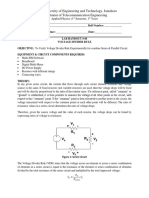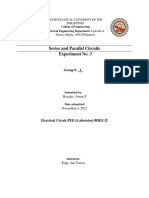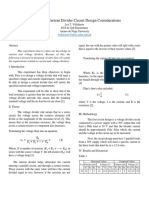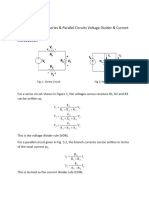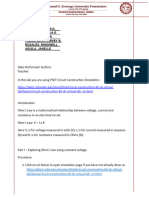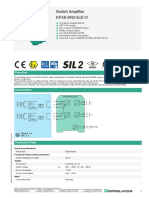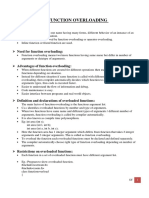0% found this document useful (0 votes)
16 views18 pagesTask 3 Simulation of Analog Circuits - Basic DC Circuits
The document outlines a lab task for EMEE2093 focused on simulating basic DC electric circuits using Multisim. It includes objectives, procedures for experiments on Kirchhoff's laws and voltage dividers, and results demonstrating the principles of circuit analysis. The conclusion highlights the successful application of theoretical concepts in practical simulations.
Uploaded by
falnaqbi13Copyright
© © All Rights Reserved
We take content rights seriously. If you suspect this is your content, claim it here.
Available Formats
Download as PDF, TXT or read online on Scribd
0% found this document useful (0 votes)
16 views18 pagesTask 3 Simulation of Analog Circuits - Basic DC Circuits
The document outlines a lab task for EMEE2093 focused on simulating basic DC electric circuits using Multisim. It includes objectives, procedures for experiments on Kirchhoff's laws and voltage dividers, and results demonstrating the principles of circuit analysis. The conclusion highlights the successful application of theoretical concepts in practical simulations.
Uploaded by
falnaqbi13Copyright
© © All Rights Reserved
We take content rights seriously. If you suspect this is your content, claim it here.
Available Formats
Download as PDF, TXT or read online on Scribd
/ 18

















